-
 Bitcoin
Bitcoin $81,899.5591
-5.17% -
 Ethereum
Ethereum $1,783.8667
-6.15% -
 Tether USDt
Tether USDt $0.9995
-0.03% -
 XRP
XRP $2.0489
-4.45% -
 BNB
BNB $587.4139
-2.79% -
 USDC
USDC $1.0001
0.02% -
 Solana
Solana $115.1373
-11.64% -
 Dogecoin
Dogecoin $0.1587
-8.43% -
 Cardano
Cardano $0.6385
-6.91% -
 TRON
TRON $0.2360
-1.08% -
 Toncoin
Toncoin $3.5760
-10.43% -
 UNUS SED LEO
UNUS SED LEO $9.3901
-0.32% -
 Chainlink
Chainlink $12.6219
-9.38% -
 Stellar
Stellar $0.2577
-4.87% -
 Avalanche
Avalanche $18.0492
-6.87% -
 Sui
Sui $2.2219
-9.39% -
 Shiba Inu
Shiba Inu $0.0...01218
-3.70% -
 Hedera
Hedera $0.1604
-7.08% -
 Polkadot
Polkadot $4.0288
-2.51% -
 Litecoin
Litecoin $82.2067
-5.10% -
 MANTRA
MANTRA $6.4186
1.43% -
 Bitcoin Cash
Bitcoin Cash $294.8176
-4.96% -
 Dai
Dai $0.9999
0.02% -
 Bitget Token
Bitget Token $4.4550
-3.01% -
 Ethena USDe
Ethena USDe $0.9995
-0.03% -
 Pi
Pi $0.5875
-13.39% -
 Monero
Monero $209.7409
-4.91% -
 Hyperliquid
Hyperliquid $11.2789
-16.95% -
 Uniswap
Uniswap $5.7386
-7.48% -
 Aptos
Aptos $5.0040
-7.56%
How do currency exchanges make money?
Currency exchanges generate revenue through methods like transaction fees, exchange rate spreads, market making, staking rewards, and additional services such as lending, borrowing, and custody.
Jan 09, 2025 at 10:50 am
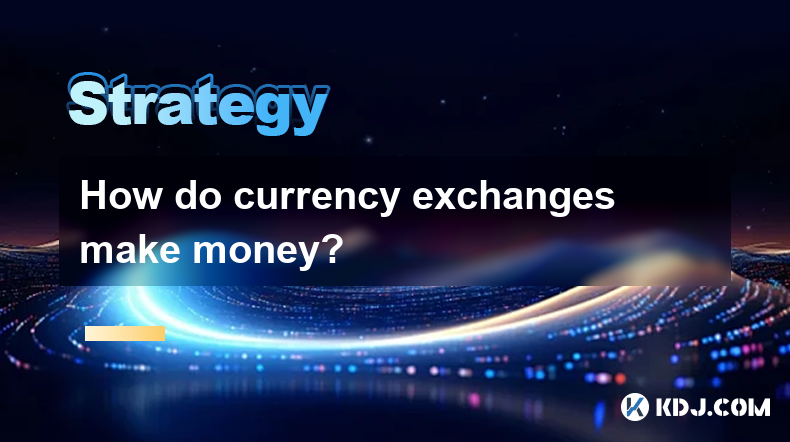
Key Points:
- Currency exchanges generate revenue through various models, including transaction fees, exchange rate spreads, market making, and staking rewards.
- Transaction fees are charged for executing trades on the exchange, while exchange rate spreads involve buying and selling currencies at different prices.
- Market making involves holding positions in different currencies to provide liquidity and facilitate trades.
- Staking rewards are earned by holding certain cryptocurrencies and validating transactions on proof-of-stake blockchains.
- Exchanges may also offer additional services such as lending, borrowing, and custody, which can generate additional revenue streams.
How Currency Exchanges Make Money
1. Transaction Fees
Transaction fees are one of the most straightforward ways for currency exchanges to generate revenue. These fees are charged when users buy or sell cryptocurrencies on the exchange. The fee structure can vary depending on the exchange, the currency being traded, and the payment method used. Some exchanges charge a flat fee per trade, while others charge a percentage of the trade value.
2. Exchange Rate Spreads
Exchange rate spreads involve buying and selling cryptocurrencies at different prices. Exchanges typically buy cryptocurrencies at a slightly lower price than the market price and sell them at a slightly higher price. The difference between the buy and sell price is the exchange spread. Exchanges may adjust their spreads based on market conditions and profitability.
3. Market Making
Market making involves holding positions in different cryptocurrencies to provide liquidity and facilitate trades. Market makers quote bid and ask prices for currencies, helping to establish the market value. They profit from the spread between the bid and ask prices, earning revenue when trades are executed. Market making is a highly competitive market requiring advanced trading strategies and risk management.
4. Staking Rewards
Staking rewards are earned by holding certain cryptocurrencies and validating transactions on proof-of-stake blockchains. Exchanges may offer staking services to their users, allowing them to earn passive income on their cryptocurrency holdings. The rewards earned through staking depend on the cryptocurrency, the amount staked, and the duration of the staking period.
5. Additional Services
In addition to the core revenue models described above, currency exchanges may offer a range of additional services such as:
- Lending: Exchanges may lend cryptocurrencies to users, earning interest on the loaned amount.
- Borrowing: Exchanges may allow users to borrow cryptocurrencies, charging interest on the borrowed amount.
- Custody: Exchanges may provide custody services for storing cryptocurrencies on behalf of users, earning fees for secure storage and management.
FAQs:
Q1: What factors influence an exchange's revenue?
A1: The size of the exchange, trading volume, fee structure, market conditions, and diversity of services offered all contribute to an exchange's revenue.
Q2: How do exchanges set transaction fees?
A2: Transaction fees vary between exchanges and can be influenced by market competition, transaction volume, and payment method.
Q3: What are the risks associated with market making?
A3: Market making involves holding cryptocurrency positions, which exposes exchanges to market volatility and potential losses.
Q4: How can users maximize their earnings from staking?
A4: Staking users should consider the staking rewards offered, the cryptocurrency's volatility, and the locking period before selecting a staking platform.
Q5: What should users consider when selecting an exchange?
A5: Users should evaluate the fees, reliability, security measures, trading features, and customer support offered by different exchanges before making a decision.
Disclaimer:info@kdj.com
The information provided is not trading advice. kdj.com does not assume any responsibility for any investments made based on the information provided in this article. Cryptocurrencies are highly volatile and it is highly recommended that you invest with caution after thorough research!
If you believe that the content used on this website infringes your copyright, please contact us immediately (info@kdj.com) and we will delete it promptly.
- Builder: Stu
- 2025-04-04 03:25:12
- PayPal Adds Solana (SOL) and Chainlink (LINK) to Its Supported Cryptocurrencies
- 2025-04-04 03:25:12
- Recent Price Action Shows Signs of Recovery
- 2025-04-04 03:20:12
- Standard Chartered (AVAX)
- 2025-04-04 03:20:12
- WisdomTree Expands Its Institutional Tokenization Platform to 13 Funds
- 2025-04-04 03:15:12
- PEPE hopped its way to a $3.8M market cap, but its reign as a meme coin darling is fading. Enter InfluencerPepe (INPEPE)
- 2025-04-04 03:15:12
Related knowledge

How to use the three crows candlestick combination to determine the market top?
Apr 03,2025 at 03:18pm
Three Black Crows are a classic K-line combination form that is often used to judge the top of the market in technical analysis. This pattern consists of three consecutive negative lines, the opening price of each negative line is within the entity of the previous K-line, and the closing price gradually decreases. This pattern usually appears at the end...
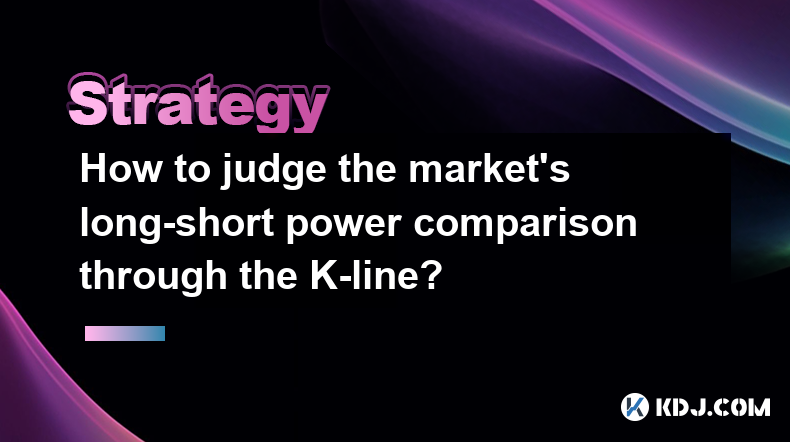
How to judge the market's long-short power comparison through the K-line?
Apr 03,2025 at 02:39pm
Judging the market's long-short power comparison through the K-line is an important skill in technical analysis. The K-line chart can not only show price changes, but also reflect the emotions and power comparison of market participants. This article will introduce in detail how to judge the market's long-short power comparison through K-lines. ...
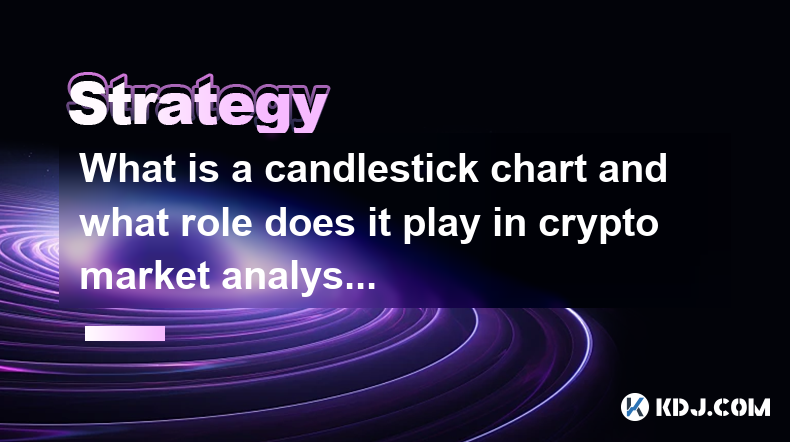
What is a candlestick chart and what role does it play in crypto market analysis?
Apr 03,2025 at 02:26pm
K-line chart, also known as candle chart, is a form of chart used to display changes in the price of financial products. In the cryptocurrency market, K-line charts are widely used to analyze the price trends of digital assets such as Bitcoin and Ethereum. This article will introduce in detail the basic structure, types of K-line charts and their specif...
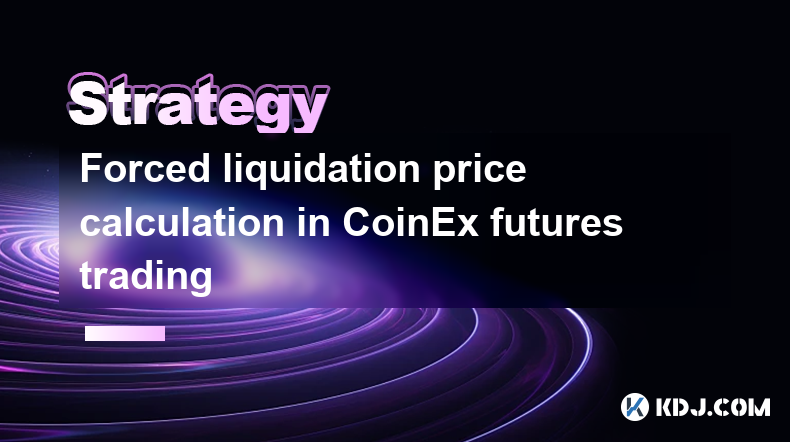
Forced liquidation price calculation in CoinEx futures trading
Apr 03,2025 at 05:35am
In CoinEx futures trading, understanding the forced liquidation price is crucial for managing risk and maintaining your positions. The forced liquidation price is the point at which your position is automatically closed to prevent further losses. This mechanism is designed to protect both the trader and the platform from negative account balances. The c...
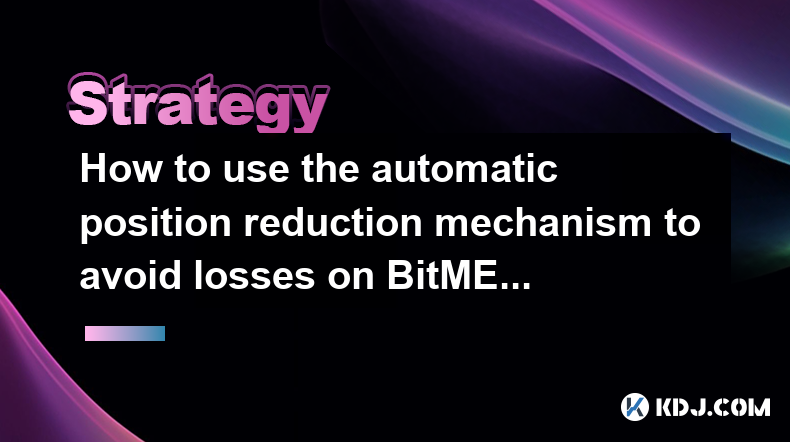
How to use the automatic position reduction mechanism to avoid losses on BitMEX
Apr 03,2025 at 02:56am
Using the automatic position reduction mechanism on BitMEX can be a strategic approach to managing risk and avoiding potential losses in the volatile cryptocurrency market. This feature, also known as Auto Deleveraging (ADL), is designed to help traders by automatically reducing their positions in certain conditions. To effectively use this mechanism, i...
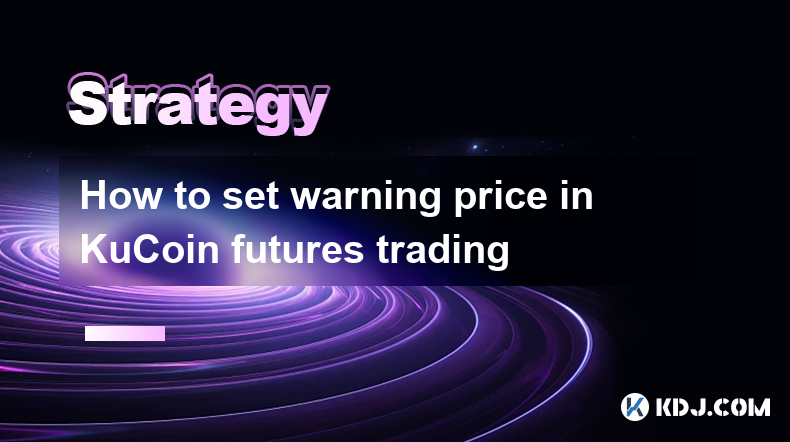
How to set warning price in KuCoin futures trading
Apr 03,2025 at 08:14am
Setting a warning price in KuCoin futures trading is an essential feature for managing risk and staying informed about market movements. This tool allows traders to receive notifications when the price of a futures contract reaches a specific level, helping them make timely decisions. To set a warning price, you need to navigate to the futures trading i...

How to use the three crows candlestick combination to determine the market top?
Apr 03,2025 at 03:18pm
Three Black Crows are a classic K-line combination form that is often used to judge the top of the market in technical analysis. This pattern consists of three consecutive negative lines, the opening price of each negative line is within the entity of the previous K-line, and the closing price gradually decreases. This pattern usually appears at the end...

How to judge the market's long-short power comparison through the K-line?
Apr 03,2025 at 02:39pm
Judging the market's long-short power comparison through the K-line is an important skill in technical analysis. The K-line chart can not only show price changes, but also reflect the emotions and power comparison of market participants. This article will introduce in detail how to judge the market's long-short power comparison through K-lines. ...

What is a candlestick chart and what role does it play in crypto market analysis?
Apr 03,2025 at 02:26pm
K-line chart, also known as candle chart, is a form of chart used to display changes in the price of financial products. In the cryptocurrency market, K-line charts are widely used to analyze the price trends of digital assets such as Bitcoin and Ethereum. This article will introduce in detail the basic structure, types of K-line charts and their specif...

Forced liquidation price calculation in CoinEx futures trading
Apr 03,2025 at 05:35am
In CoinEx futures trading, understanding the forced liquidation price is crucial for managing risk and maintaining your positions. The forced liquidation price is the point at which your position is automatically closed to prevent further losses. This mechanism is designed to protect both the trader and the platform from negative account balances. The c...

How to use the automatic position reduction mechanism to avoid losses on BitMEX
Apr 03,2025 at 02:56am
Using the automatic position reduction mechanism on BitMEX can be a strategic approach to managing risk and avoiding potential losses in the volatile cryptocurrency market. This feature, also known as Auto Deleveraging (ADL), is designed to help traders by automatically reducing their positions in certain conditions. To effectively use this mechanism, i...

How to set warning price in KuCoin futures trading
Apr 03,2025 at 08:14am
Setting a warning price in KuCoin futures trading is an essential feature for managing risk and staying informed about market movements. This tool allows traders to receive notifications when the price of a futures contract reaches a specific level, helping them make timely decisions. To set a warning price, you need to navigate to the futures trading i...
See all articles






















































































